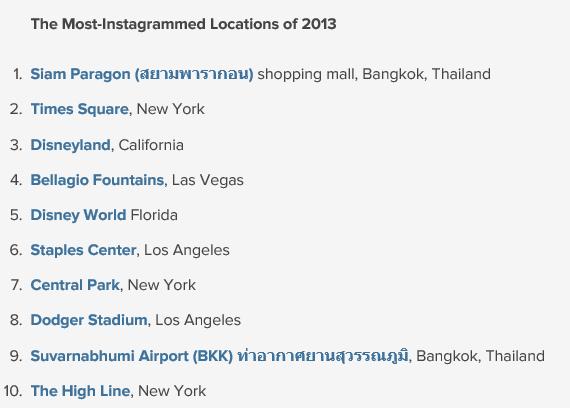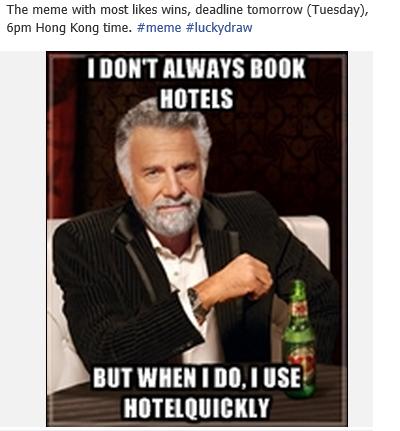6 ways to build your presence on Instagram
A picture paints a thousand words and there are as many ways to use Instagram. Ritesh Gupta takes a look
Instagram recently hit 200 million monthly active users worldwide. Clearly, it’s no longer a social network that big or small travel companies can ignore. But what works best on Instagram and how can travel brands make the most of this photo-sharing social network? Here are six ways to 'insta' your brand.
1. Build brand awareness with an offbeat angle: Many travel marketers using Instagram will refer to brand campaigns as a key objective. “American Airlines leverages Instagram to build brand loyalty among passionate travellers and aviation enthusiasts,” says Stephanie Scott, social media specialist at American Airlines. The team focuses on sharing high-quality, authentic images of all things related to aviation, including exterior and interior shots of aircraft and views from the wing; these are tagged with #AmericanView. For Karin Eriksson, until recently a social media manager at Scandic Hotels, Instagram is used, in the main, for product branding but it does depend on your KPI. "You can see how many new followers, 'hearts' and comments you have. But you can't post links on Instagram and so you can't track conversions like newsletter registrations or room nights because you can't link to your website," says Eriksson, who believes this will change in the future.
2. Inspire people to travel: “We are seeing that Instagram can be nicely used as channel to inspire, to make people dream about travel, destinations or a certain lifestyle,” says Huong Giang To, market coordinator and key account managemer, at HotelQuickly (HQ), a mobile-only last-minute hotel booking application. Instagram is a great tool for visual stimulation and to engage companies and customers to interact with each other on a more emotional level. “Through Instagram we are able to inspire people by posting content like the most beautiful resorts in the world, or the best views of the city,” she says.
3. Post popular images: Holiday pictures and sunsets are still very popular, says Eriksson. She cites two examples of two recent successful Instagram campaigns.
· Ving Sweden, Thomas Cook Northern Europe’s traveller agency has just started a hashtag: #drömstränder, dream beach. The aim is to get users to share their beautiful beach pictures and hashtag them so friends are inspired.
· Lonely Planet’s ‘Instawalk’ which encouraged participants to post their favourite pics of the city and tag them with #LPinstawalk. The prize, for 15 partipants, was a three-hour guided walk of London led by destination expert and Lonely Planet author Sally Schafer and prominent urban instagrammer @mrwhisper, as well as copy of Pocket London.

4. Encourage participation: HotelQuickly’s Instagram campaigns involve users uploading their own pictures and voting for their favourite ones. The firm recently worked on a campaign called ‘My lovely date’ #mylovelydate2013. The aim was to get friends to like a picture – and more importantly to share it. Another photo contest called #hqspontaneous, encouraged people to take spontaneous trips in Jakarta or nearby. Users were encouraged to ‘screenshot’ and repost or ‘re-insta’ the picture on their own Instagram and then tag it. “That’s a way to get bigger reach. You can easily see how many pictures are hashtagged,” says Giang To, who admits that conversions are more difficult to assess.
5. Use the right hashtags but remember overuse can kill engagement: Used correctly hashtags can make a campaign more popular. Eriksson says creating hashtags for Instagram isn’t really different from those created for Twitter. “You can make your own hashtag but make sure you use a unique one. Follow trends. Everyday new hashtags are started,” she says. Citing an example, she refers to planking’ – the practice of lying on something, taking a picture of yourself and posting it on Instagram with the #planking. “Those kinds of hashtag trends are popping up every day. If your company is fast and picks up trends and makes their own version, it’s going to be very popular and engaging,” says Eriksson. Choosing a hashtag that is more relevent to your audience, increases the chance that your photos will show up when customers search for specific topics. But a word of warning comes from Giang To: “Don’t overuse hashtags as it can depress engagement.”
6. Reward participants: Campaigns should be fun and light-hearted contests and participants should be rewarded. HotelQuickly ran a so-called meme contest on Instagram in January. The team asked users to create their own HotelQuickly meme and incentivised them by offering a $20 voucher for the best one.

This was a test campaign to share some fun moments with followers and to test how people perceive the app. The team did not measure the success of this campaign by the number of likes, but rather by how creative people can be with the brand. “We wanted to see how our users perceive our app. We got some great memes mentioning our super low rates, and how they prefer us to big OTAs,” says Giang To. And this was the measure of success!
Top tips from Eriksson include:
· Act quickly on trends but don’t worry if you miss one – in other words be resilient and keep trying
· Be personal
· Get to know your target group. Learn what they like, what engages them and what they are talking about
· Use analytics tools to optimise your reach

